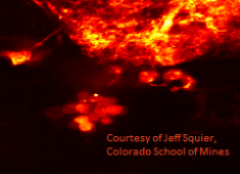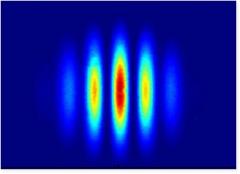Applications of Coherent EUV and Soft X-Ray Beams
Extreme ultraviolet (EUV) and soft X-ray (SXR) science has seen revolutionary advances over the past decade. First, small- and large-scale coherent sources, including high harmonic generation (HHG) sources, are under rapid development worldwide. Compared with previous generation sources, these new light sources have remarkable properties. Tabletop HHG sources bring a tunable X-laser to your laboratory, with selectable wavelength from 2 – 47 nm (26 – 700 eV), control over the linewidth from <100meV to a coherent supercontinuum, fully spatially coherent beams, linear and circular polarization, as well as the ability to generate attosecond pulses and pulsetrains that are perfectly synchronized to the driving laser pulses. These unique new capabilities are allowing scientists to make the most precise measurements to date – from capturing intrinsic sub-femtosecond electron dynamics in materials, to implementing the first sub-wavelength EUV/SXR microscopes. Both of these applications were enabled by the KMLabs XUUS – the first engineered commercial HHG source.
- Photoelectron spectroscopies
- Magnetic Spectroscopies (MOKE and XMCD)
- Coherent Diffractive Imaging using HHG
- Coincidence Spectroscopies (VMI and COLTRIMS)
Relativistic Electron Acceleration
In “Relativistic electron acceleration by mJ-class kHz lasers normally incident on liquid targets“, by Scott Feister et al., the authors demonstrate a high-repetition rate, high-flux source containing >MeV electrons from a few-mJ, <40fs laser source and a liquid target. The resulting electron flux equals or exceeds that in prior work using lower repetition rate lasers and oblique incidence. The reduced size and complexity of the system compared with laser facilities operating between 0.03-1Hz, along with the high repetition rate of the system, show promise as an alternative to conventional accelerator sources. This work is further enabled by the high pulse contrast and low pedestal of the Red Dragon amplifier system. The Red Dragon system used in this work was in operation from 2006, and recently replaced by our award-winning RAEA amplifier.
Coherent Raman Scattering
Coherent Raman scattering, in all of its various incarnations (CARS, SRS, ISRS, RIKES, etc.) derives species specificity and concentration by probing the molecular structures present in the foci of an appropriately prepared laser(s) without the addition of any external labels. The capacity to generate supercontinuum with high power spectral density in the short-wave infrared via high pulse energy, high repetition rate, and short pulse duration enables the generation of a broad spectrum stokes pulse suitable for multiplexed Raman scattering experiments. The long wavelength of these excitation pulses in the short-wave infrared are ideally situated being in both eye-safe [Rasskakzov2017] and overlapping a biological imaging window for deep tissue penetration.





